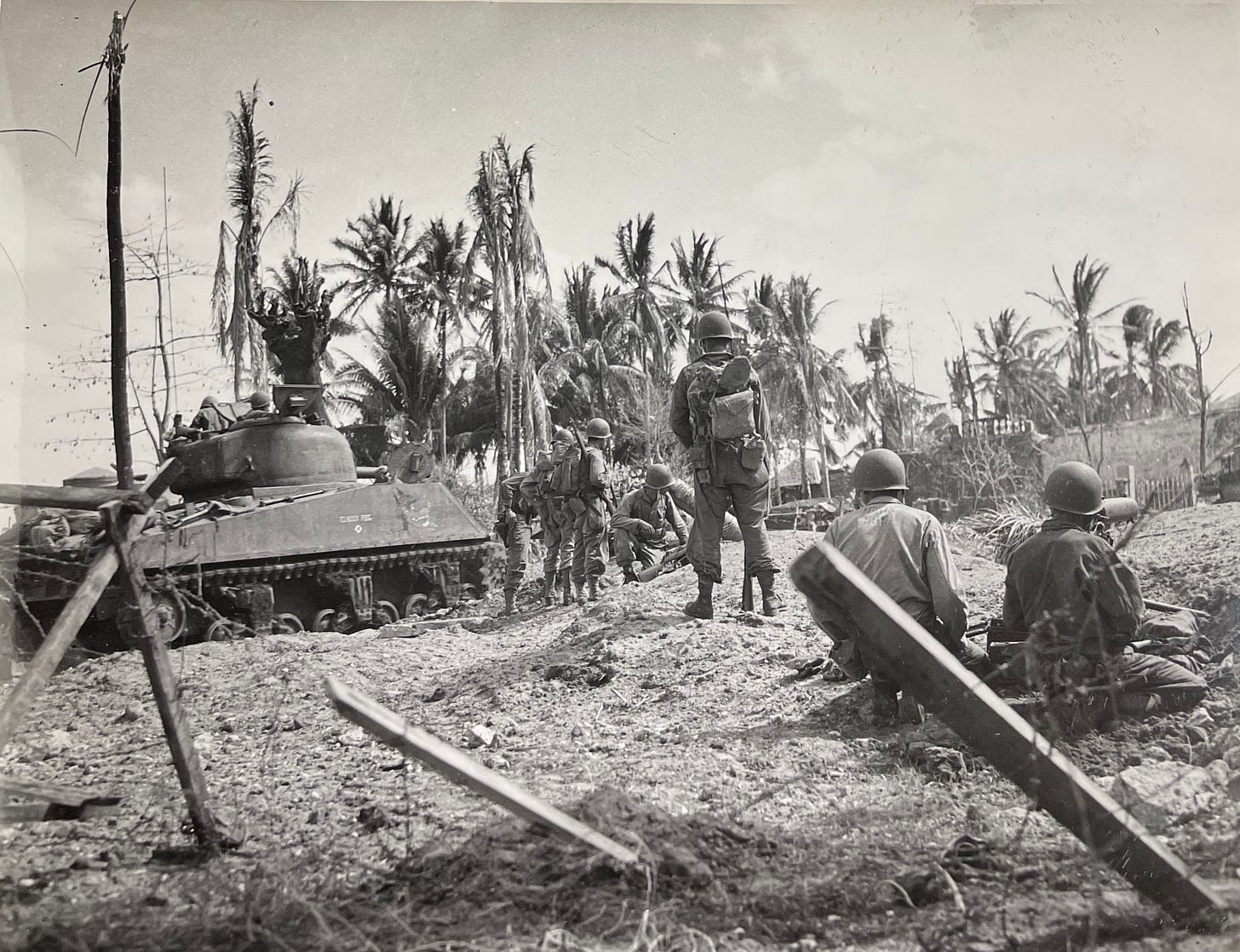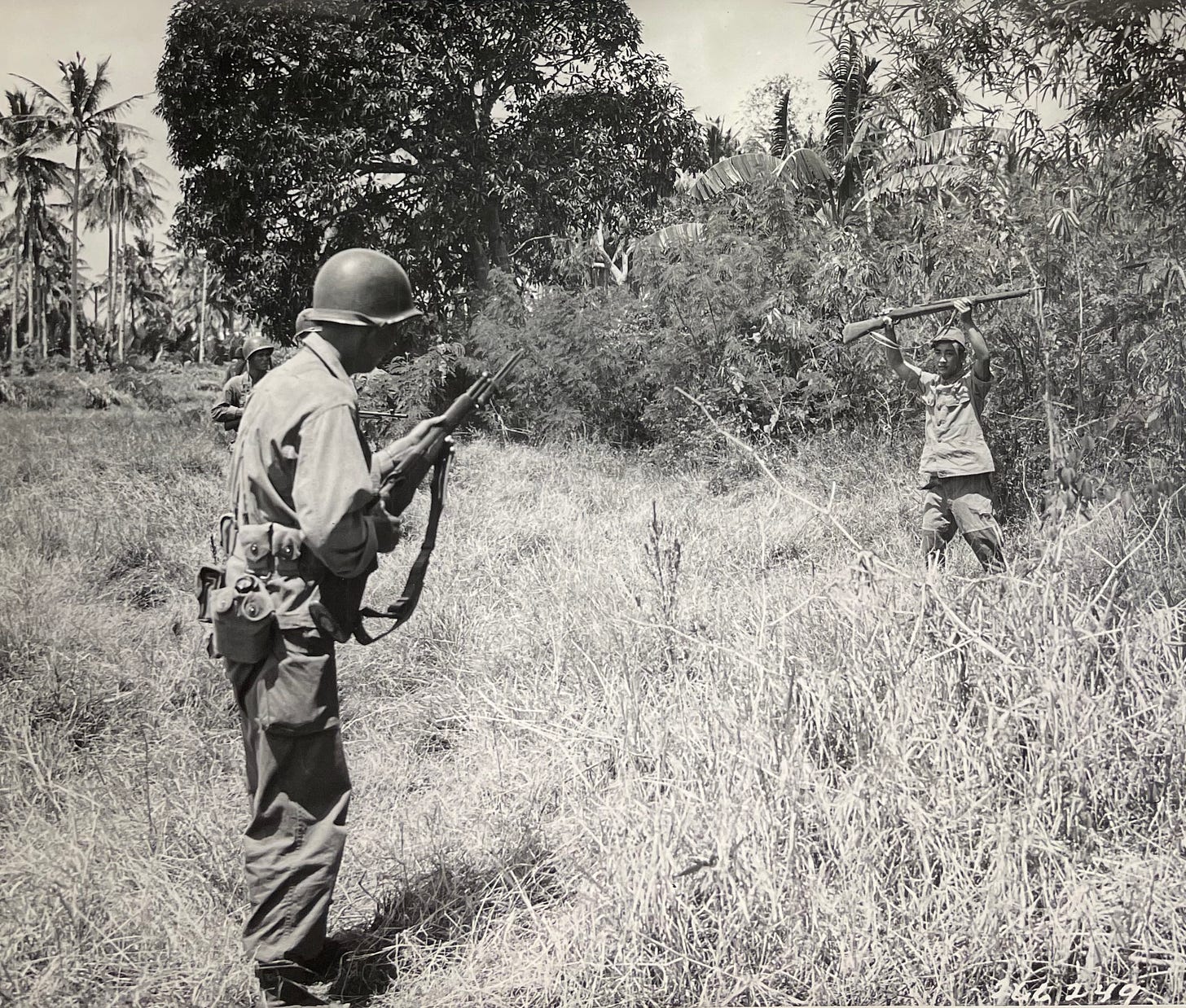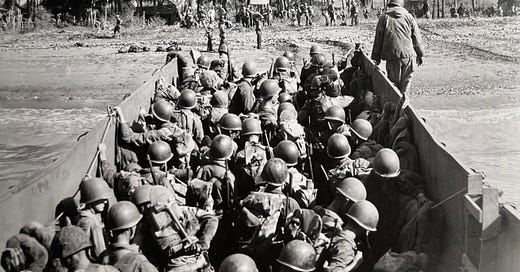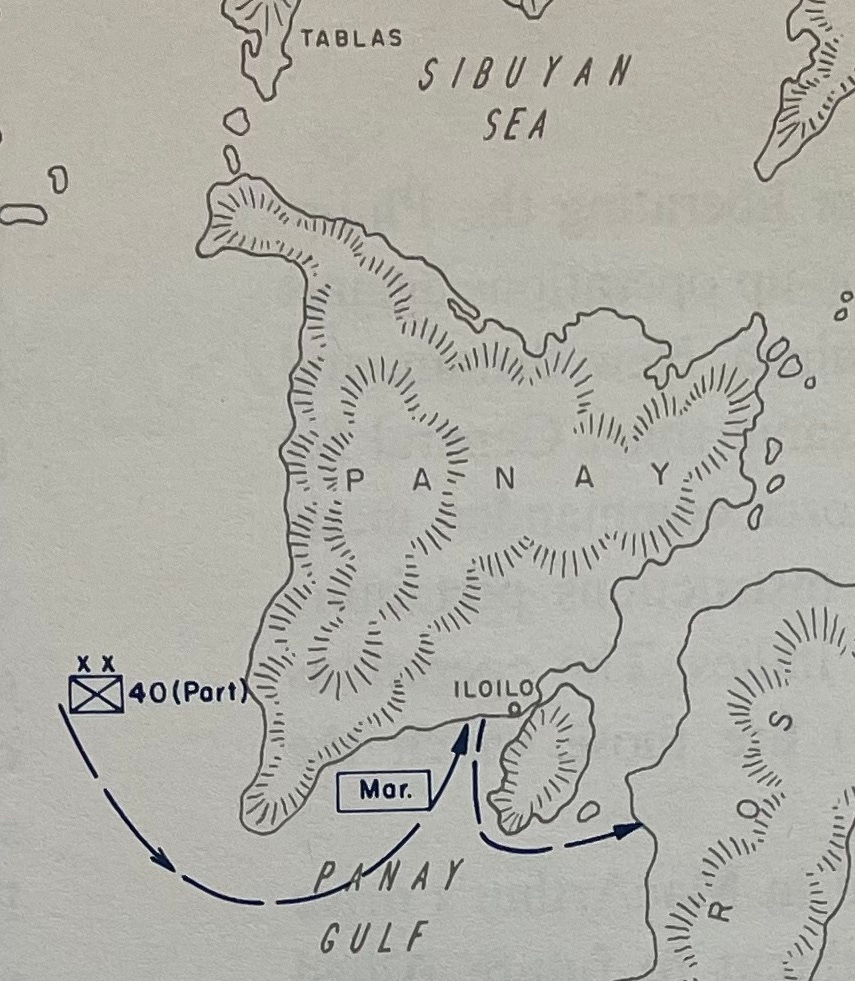
A new kind of war began for the 40th Infantry Division in mid-March 1945. After their baptism of fire on Luzon, their mission became an island hopping campaign within the Philippine archipelago, to secure smaller islands where Japanese forces could threaten crucial sea lanes. Their operations became largely independent of other U.S. military units. Instead they fought side by side with Philippine guerillas, who after years of organizing and waiting were ready to rise to free their homeland. Together they would be the liberators of entire Philippine islands.
Lieutenant James Kim took on a new role as well. An infantry officer in the 160th Infantry Regiment at the beginning of the campaign on Luzon, he became the intelligence officer (S-2) of the 160th Infantry’s 1st Battalion. He would command the battalion’s intelligence section for the rest of the campaign in the Philippines.
The first island of the campaign was Panay. Located 200 miles south of Luzon, Panay was the sixth largest Philippine island, whose capital city of Iloilo had a harbor that was a key to controlling the straits between Luzon and Mindanao, the second largest Philippine island. A guerilla organization of more than 20,000 men under Colonel Macario Peralta, a charismatic leader who after the war became a member of the Senate of the Philippines and the Secretary of National Defense, already controlled much of the island and was waiting to fight alongside U.S. forces to complete its liberation.
On March 15, elements of the 40th Infantry Division boarded amphibious assault ships in Lingayen Gulf for the voyage to Panay. Landing on Panay’s southern coast on March 18, the 185th Infantry Regiment advanced toward Iloilo while the division’s reconnaissance troop moved to secure the island’s main airfield. A battalion of the 160th Infantry Regiment remained in reserve securing the beachhead.

Aided by Philippine guerillas, these 40th Infantry Division units liberated Iloilo by March 20 and secured the airfield two days later.

Hundreds of Japanese soldiers remained at large in Panay’s inland mountains, and they showed the men of the 40th Infantry Division the Imperial Japanese Army’s contempt for the lives of their own people. In one action, Japanese soldiers cornered by American troops turned their bayonets on Japanese civilians who had been fleeing with them, killing 62 women and children before themselves falling to American fire. Japanese soldiers killed 50 of their own in a field hospital about to be overrun, injecting them with a sedative and then setting the hospital on fire. A few survived to surrender and tell their American captors about the massacre.
By the end of March, the 40th Infantry Division was able to turn over pursuit of the remaining Japanese to the guerillas and begin preparing for the next phase of its island hopping campaign. The 160th Infantry Regiment’s battalion on Panay remained there to secure the island while the regiment’s two other infantry battalions, left behind on Luzon, rejoined the division for the next operation: an amphibious landing on the neighboring island of Negros.
This series previews my upcoming book Victory in Shanghai: A Korean American Family’s Journey to the CIA and the Army Special Forces, whose publication is expected by June 1, 2025. You can pre-order it now through Potomac Books, an imprint of the University of Nebraska Press, at this link, or through your favorite local independent bookseller.
Subscription to this series is free.
If you know anyone who may be interested in this series, please share it with them.





